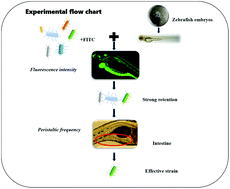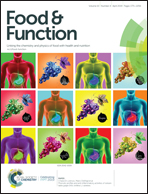Screening of intestinal peristalsis-promoting probiotics based on a zebrafish model
Abstract
Based on the difference of the intestinal tract fluorescence intensity of zebrafish, the precise screening of strains with high retention capacity in vivo was completed and probiotics for intestinal peristalsis were quickly screened from strains with high retention capacity using the transparent visibility of zebrafish. In order to study the relationship between probiotic retention and intestinal peristalsis and develop constipation-resistant probiotics, this study used 2 types of strain and 6 potential functional strains and screened them based on the fluorescence intensity and intestinal peristalsis-promoting in the zebrafish model. The methods and results were as follows: (1) the zebrafish were immersed in the strains labeled with fluorescein isothiocyanate (FITC), and the intestinal fluorescence intensity was taken as the index. The strain L. paracasei X11 with good retention capacity was screened out. (2) 220 zebrafish were randomly selected and divided into 11 groups with 20 tails in each group. 1 group was the normal control group and the other 10 groups were used to construct the constipation zebrafish model by the loperamide hydrochloride method, namely, 1 model control group, 1 model + positive drug control group (domperidone), 2 model + type strains control groups, and 6 model + potential strain treatment groups. The intestinal peristalsis frequency of each group within 1 min was calculated after immersing the model zebrafish in 108 CFU mL−1 strain solution. The results showed that L. paracasei X11 had a better function of intestinal peristalsis-promotion.



 Please wait while we load your content...
Please wait while we load your content...